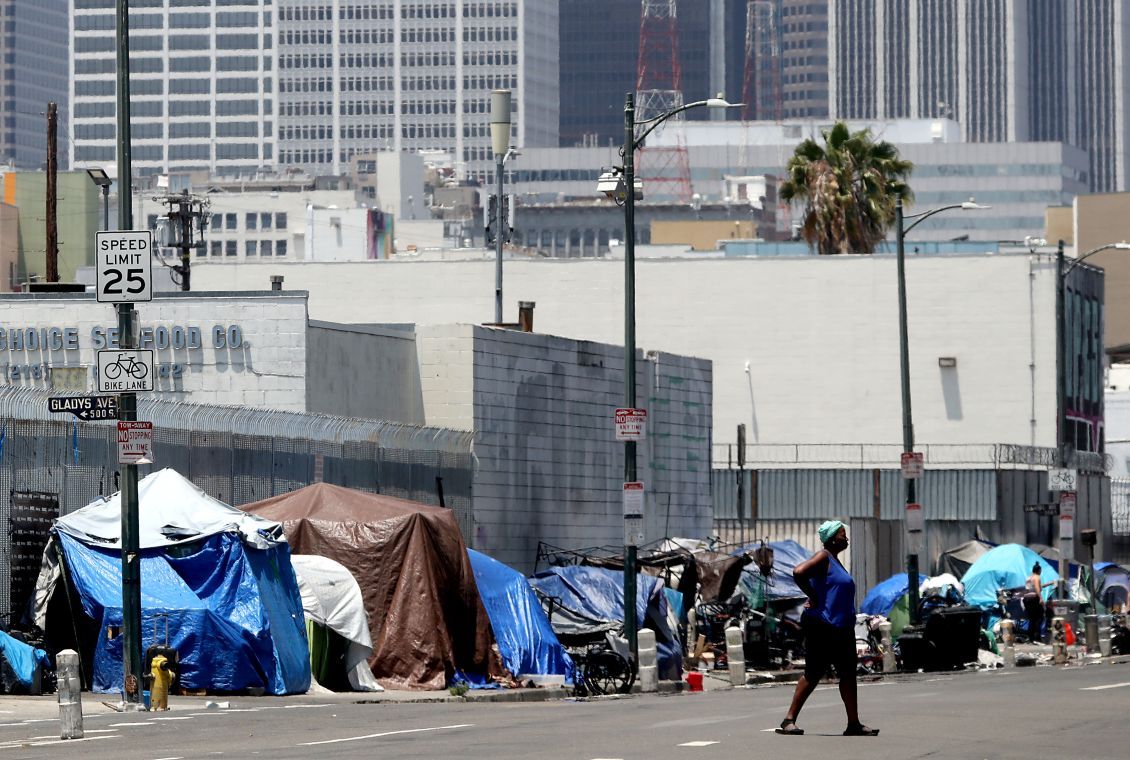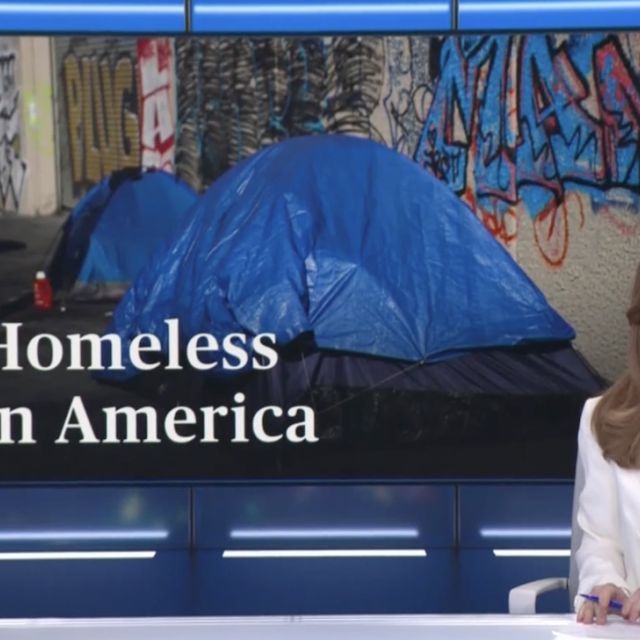The number of Americans experiencing homelessness on a given night rose by 12 percent last year, surpassing 650,000 people for the first time since reporting on this metric began in 2007. Said another way, one out of every 500 men, women, and children in the U.S. were found either in a temporary shelter or unsheltered in places not meant for habitation, such as in parks, cars, abandoned buildings, or transit stations.
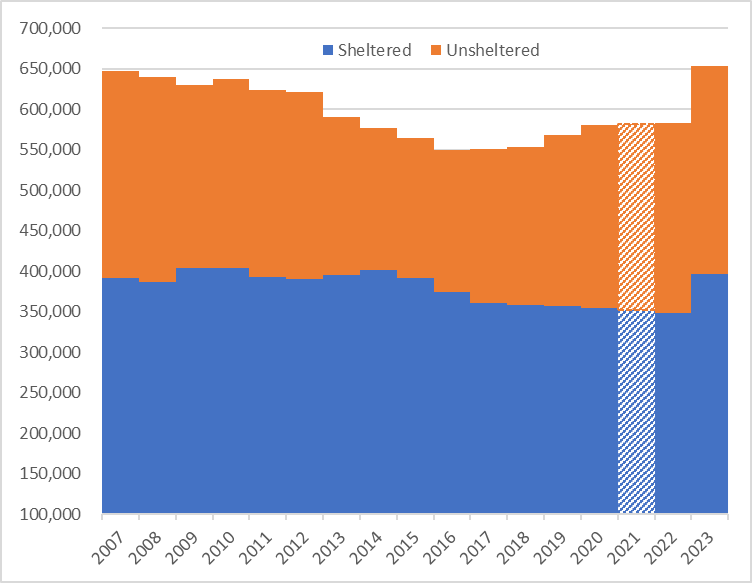
Note: 2021 data is extrapolated due to partial data collected during the COVID-19 pandemic.
Source: HUD Annual Homelessness Assessment Reports, 2007-2023
This sobering data comes from HUD’s 2023 Annual Homelessness Assessment Report (AHAR), which summarizes the data collected during the yearly Point-In-Time (PIT) count of people experiencing homelessness over a 10-day period last January. The PIT count offers a detailed snapshot of the conditions and characteristics of people in need of emergency shelter on a given night. However, due to the very fluid circumstances and availability of housing for this population, many people experiencing homelessness flow in and out of housing, sometimes even on a day-to-day basis. The AHAR does not, therefore, provide a comprehensive look at all Americans without fixed, regular nighttime accommodations, which experts estimate to be many multiples of the PIT count.
The 2023 AHAR reflects the findings of the first regular PIT count conducted after two years of partial or delayed counts due to the COVID-19 pandemic. Though PIT counts in 2021 and 2022 may have underreported the number of people experiencing homelessness on a given night, elevating the observed increase year over year, the record-high count still suggests a rapidly growing crisis being felt in communities across the country. “These numbers reveal an incalculable level of despair among far too many people in this country,” Enterprise CEO and President Shaun Donovan recently said. “The homelessness crisis – and indeed the affordable housing crisis at its root – is eminently solvable. The solutions are there. We just need the willpower.”
Disparities Among People Experiencing Homelessness
The PIT data also report on the distribution of people experiencing homelessness on a given night across a range of characteristics, revealing stark disparities by race, age, veteran status and a range of other characteristics. For instance, the share of people in the PIT count who identify as Black is 37%, fully 25 percentage points more than their share of the total population in the U.S. Hispanic/Latine groups likewise account for 27% of the PIT count but only 19% of the population. White-identifying individuals (regardless of Hispanic origin), however, make up 71% of the US population but only 50% of the PIT count. The groups with the largest increase in their PIT counts, meanwhile, are also disproportionately distributed, with the number of Asian-identifying individuals growing by 40%, of Hispanic/Latine individuals by 28%, and Native Americans by 18%.
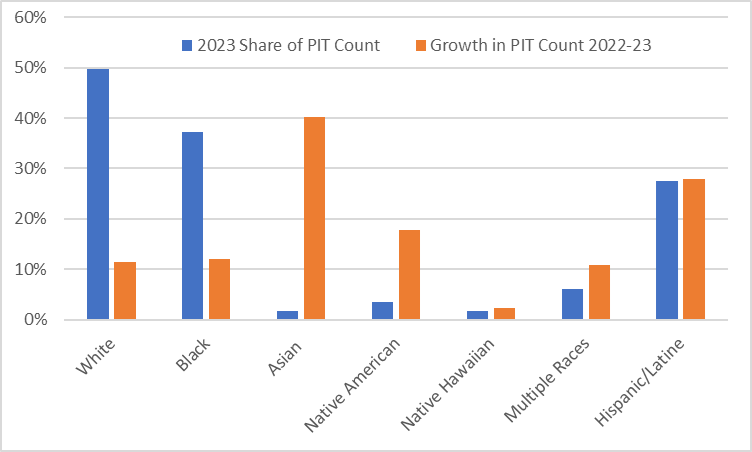
Note: Hispanic/Latine can be any race.
Source: HUD Annual Homelessness Assessment Reports, 2022-2023
By age, while people ages 25-64 are most likely to experience homelessness (representing 64% of the 2023 PIT count versus 52% of the total population), youth homelessness grew faster last year, increasing by 14% among those under 18 and 18% among those ages 18-24. The 2023 PIT was the first to capture counts of seniors experiencing homelessness, who accounted for 6% of the total. Another 6% did not identify their age.
The one bright spot in the PIT counts is the continued success in reducing veteran homelessness, which despite an 7.4% increase in 2023 remains near recorded lows. The veteran share of people experiencing homelessness also fell below 5.5%, from a prior high of nearly 12% in 2010, in line with their share of the total US population. Segmenting veteran homelessness by those in temporary shelter and unsheltered locations, however, shows the latter increased 14% last year, indicating a reduction in beds occupied by veterans.
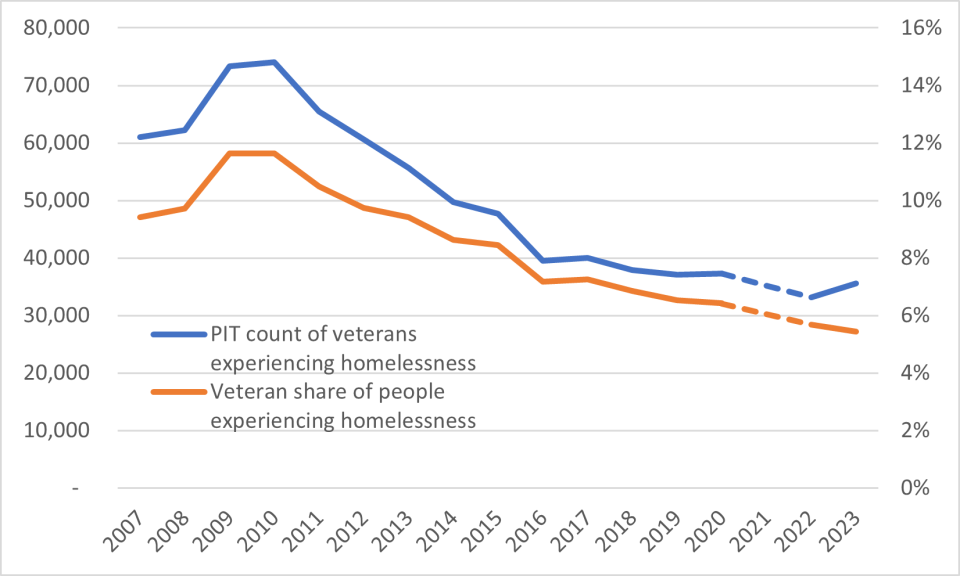
Note: 2021 data is extrapolated due to partial data collected during the COVID-19 pandemic.
Source: HUD Annual Homelessness Assessment Reports, 2007-2023
Addressing the Homelessness Crisis
The latest PIT data highlight the most extreme consequences of the challenges that millions of Americans face on a regular basis – the lack of affordable and available housing options for the most vulnerable members of our society. Record high rental costs, driven by supply imbalances and the end of Covid-era assistance options, leave many individuals and families with few alternatives to sleeping on the streets, in cars, or battling for a decreasing number of temporary shelter beds.
Reducing incidences of homelessness – or better yet, preventing it before it even begins – will require coordination and commitment from policymakers at all levels of government. This means increasing federal resources committed to providing rental assistance and supportive services for people experiencing or at risk of homelessness, developing state-based solutions to unlock available housing options, and reforming local policies that criminalize homelessness without addressing its underlying causes. Our policymakers must do more to address the homelessness crisis head on and prevent even more households from losing access to housing.
